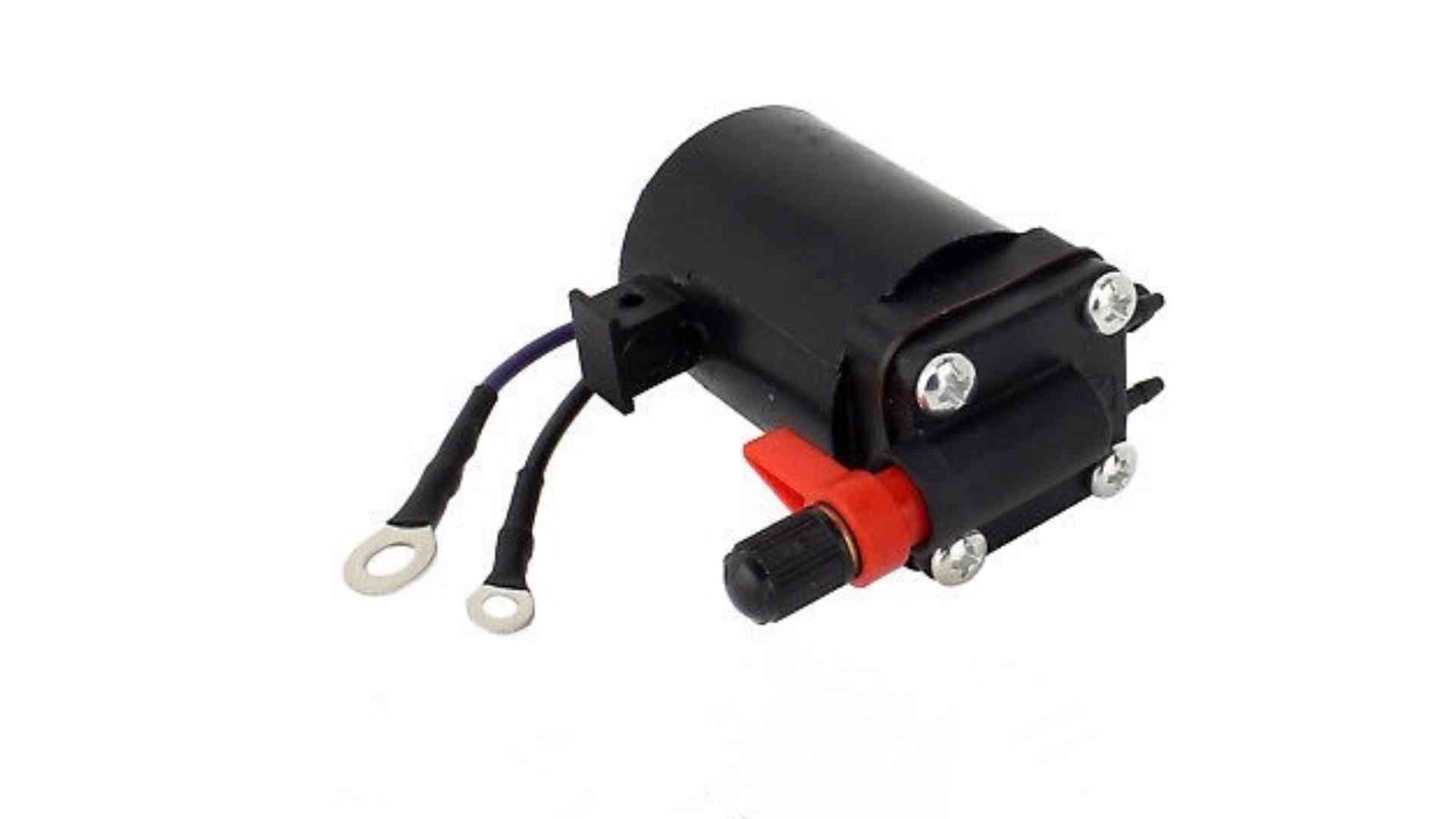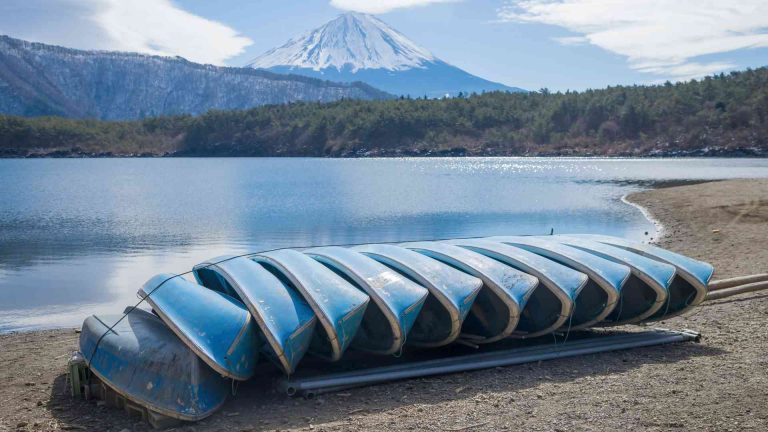How to Detect a Bad Primer Solenoid
Learn how to detect a bad primer solenoid in outboard motors with this comprehensive guide. Discover symptoms, troubleshooting steps, and testing methods for optimal engine performance.
Outboard motors are the heart of many boats, providing reliable power for fishing, cruising, or watersports. A critical component in these engines is the primer solenoid, which ensures proper fuel delivery during startup, especially in cold conditions. A faulty primer solenoid can lead to hard starting, poor fuel delivery, or engine stalling, leaving boaters frustrated on the water. This in-depth guide will walk you through the process of detecting a bad primer solenoid, covering symptoms, diagnostic techniques, troubleshooting steps, and replacement considerations. Whether you’re a seasoned mechanic or a weekend boater, this article will equip you with the knowledge to keep your outboard motor running smoothly.
Understanding the Primer Solenoid and Its Role
The primer solenoid is an electromechanical valve in outboard motors that facilitates fuel delivery to the engine during the starting process. Often compared to an electric choke, it opens to allow fuel to flow into the intake manifold when the ignition key is pushed in, priming the engine for ignition. This is particularly important for two-stroke outboard motors, like those from Johnson, Evinrude, or Mercury, where cold starts require a richer fuel mixture.
The solenoid typically features a red lever for manual override, which can bypass the electrical system in emergencies, such as a dead battery. It also connects to fuel lines and the engine’s intake manifold via small hoses, ensuring fuel reaches the cylinders. When the solenoid fails, it disrupts this process, leading to symptoms like hard starting or no fuel delivery.
How the Primer Solenoid Operates
When you push the ignition key, the solenoid receives a 12-volt signal, causing an internal valve to open. This allows pressurized fuel from the primer bulb or fuel pump to flow through the solenoid and into the engine’s intake manifold. The fuel pump, activated during cranking, sends fuel pulses to the solenoid, ensuring a steady supply during startup. In normal operation, the red lever remains parallel to the solenoid body, in the “run” position. Flipping the lever to the manual override position allows fuel to flow without electrical activation, useful for rope-starting or troubleshooting.
Here’s a simplified diagram of the primer solenoid’s operation:

Common Symptoms of a Bad Primer Solenoid
A malfunctioning primer solenoid can cause a range of issues that affect engine performance. Recognizing these symptoms early can save you time and prevent further damage. Below are the most common signs of a faulty primer solenoid:
- Hard Starting, Especially When Cold: The engine struggles to start, particularly in cold conditions, due to insufficient fuel delivery.
- No Fuel Delivery During Priming: When the key is pushed, no fuel flows through the solenoid to the engine.
- Intermittent Operation: The solenoid may work sporadically, causing inconsistent engine performance.
- No Click Sound: A healthy solenoid produces a distinct “click” when activated. Silence suggests an electrical or mechanical issue.
- Engine Surging or Stalling: Insufficient fuel delivery can cause the engine to surge, cut out, or stall, especially at idle or low speeds.
- Fuel Leaks or Blockages: Physical damage or clogged fuel lines connected to the solenoid can mimic solenoid failure.
If you notice these symptoms, it’s time to investigate the solenoid and related components.
Diagnostic Techniques for Detecting a Bad Primer Solenoid
Diagnosing a primer solenoid issue requires a systematic approach. Below are detailed steps to identify whether the solenoid is faulty, along with tools and precautions to ensure accurate results.
Tools Needed
- Multimeter (digital or analog)
- Screwdrivers (Phillips and flathead)
- Carburetor cleaner or spray
- Replacement fuel hoses (if needed)
- Basic hand tools (wrenches, pliers)
- Safety gear (gloves, eye protection)
Step 1: Visual Inspection
Begin with a thorough visual check of the solenoid and its components:
- Check for Physical Damage: Inspect the solenoid for cracks, corrosion, or loose connections. Look for signs of wear on the solenoid body or electrical terminals.
- Examine Fuel Lines: Ensure the fuel lines connected to the solenoid are intact, with no leaks, cracks, or blockages. Old or ethanol-damaged hoses may swell or degrade, restricting fuel flow.
- Inspect the Red Lever: Verify that the red lever is in the “run” position (parallel to the solenoid body) during normal operation.
Step 2: Listen for the Click
Activate the ignition key by pushing it in while the key is in the “run” position (engine not running). A functioning solenoid should produce a clear “click” as the internal valve opens. If you hear no sound, the solenoid may not be receiving power or could be internally faulty.
Step 3: Electrical Testing
Electrical issues are a common cause of solenoid failure. Use a multimeter to perform the following tests:
- Verify Voltage:
- Set the multimeter to DC voltage mode.
- Connect the multimeter probes to the solenoid’s positive and ground terminals.
- Push the ignition key in while the key is in the “run” position.
- The multimeter should read approximately 12 volts. If no voltage is present, check the ignition switch, wiring, or ground connections.
- Check Coil Resistance:
- Set the multimeter to resistance (ohms) mode.
- Disconnect the solenoid’s electrical wires.
- Measure the resistance across the solenoid’s terminals.
- A healthy solenoid typically reads 4–5 ohms. An “open” reading (infinite resistance) indicates a failed solenoid coil.
Step 4: Fuel Flow Test
To confirm whether the solenoid is delivering fuel:
- Pump the primer bulb until it’s firm to pressurize the fuel system.
- Disconnect the small fuel hose from the carburetor or intake manifold (not the solenoid, to avoid damaging delicate plastic barbs).
- Turn the key to the “run” position and push it in.
- Observe the disconnected hose. Fuel should pulse or squirt out with force. A slow ooze or no flow suggests a solenoid issue or blockage.
Caution: Be careful when handling fuel lines to avoid spills. Use a rag to catch any fuel, and work in a well-ventilated area away from sparks.
Step 5: Manual Override Test
If the solenoid doesn’t function electrically, test the manual override:
- Flip the red lever to the upright position (perpendicular to the solenoid body).
- Squeeze the primer bulb to pressurize the fuel system.
- Check for a strong stream of fuel from the disconnected hose. If fuel flows freely, the solenoid’s manual valve is functional, but the electrical component may be faulty.
Step 6: Check Related Components
A bad solenoid isn’t always the culprit. Inspect these related systems:
- Fuel Pump: Ensure the fuel pump is delivering adequate pressure. A weak pump may mimic solenoid issues.
- Primer Bulb: A soft or damaged bulb may not provide enough pressure to test the solenoid properly.
- Carburetor: Clogged jets or improper float settings can cause symptoms similar to a bad solenoid.
- Ignition System: Weak spark in some cylinders (as seen in some cases) can complicate starting issues, even with a functioning solenoid.
Troubleshooting Flowchart
Here’s a flowchart to guide your troubleshooting process:

Case Study: Troubleshooting a 1995 Johnson 115 HP Outboard
Consider a real-world example involving a 1995 Johnson 115 HP outboard (model J115SLEOC). The owner reported hard starting and suspected the primer solenoid wasn’t delivering fuel. Here’s how they diagnosed the issue:
- Visual Inspection: The solenoid and fuel lines showed no visible damage, but the red lever was in the “run” position.
- Click Test: No click was heard when the key was pushed, indicating a potential electrical issue.
- Fuel Flow Test: After pumping the primer bulb, the owner disconnected the fuel hose from the carburetor. No fuel flowed when the key was pushed, but flipping the red lever up and squeezing the bulb produced a strong fuel stream.
- Electrical Test: A multimeter showed 12 volts at the solenoid, but the coil resistance was infinite, confirming a failed solenoid.
- Workaround: The owner used the manual override to start the engine, flipping the lever back to “run” after starting.
- Solution: The solenoid was replaced with a spare from another engine, restoring normal operation.
This case highlights the importance of systematic testing and the utility of the manual override as a temporary fix.
Replacement Considerations and Costs
If the solenoid is confirmed faulty, replacement is often the best solution. Here’s what to consider:
- OEM vs. Aftermarket: Original Equipment Manufacturer (OEM) solenoids, such as those from Evinrude or Mercury, ensure compatibility but cost more ($50–$150). Aftermarket options are cheaper ($20–$80) but may vary in quality.
- Compatibility: Verify the solenoid matches your engine model (e.g., 1995 Johnson 115 HP or 1998 Mercury 200 EFI). Check part numbers and hose configurations.
- Installation: Replacing the solenoid involves disconnecting fuel lines and electrical wires, installing the new unit, and testing for leaks and functionality. Professional installation may cost $100–$200, depending on labor rates.
Sample Replacement Solenoid Pricing
| Brand/Model | Part Number | OEM Price | Aftermarket Price |
|---|---|---|---|
| Johnson/Evinrude 115 HP | 0438400 | $80–$120 | $30–$60 |
| Mercury 200 EFI | 818691 | $100–$150 | $40–$80 |
| Universal 2-Stroke Solenoid | N/A | N/A | $20–$50 |
Note: Prices are approximate and may vary by retailer. Check with marine dealers or online platforms like eBay for availability.
Maintenance Tips to Prevent Solenoid Issues
Preventive maintenance can extend the life of your primer.
- Regular Inspections: Periodically check the solenoid and fuel lines for signs of wear, corrosion, or damage. Early detection can prevent major failures.
- Use Ethanol-Free Fuel: Ethanol can degrade fuel lines and gaskets, potentially affecting solenoid performance. Use ethanol-free fuel when possible or add a fuel stabilizer.
- Clean Fuel System: Flush fuel lines and fittings with carburetor cleaner to remove debris or buildup that could obstruct the solenoid.
- Winterization: If storing the boat for an extended period, properly winterize the engine to prevent fuel residue from clogging the solenoid or lines.
- Check Electrical Connections: Ensure wiring and terminals are secure and free of corrosion to maintain consistent power to the solenoid.
Common Questions About Primer Solenoids
Yes, when the primer bulb is pumped firm and the key is pushed in, fuel should squirt or pulse out of the disconnected hose with some force. A slow ooze indicates a potential issue with the solenoid, fuel pump, or lines.
Yes, flipping the red lever to the manual override position allows fuel to flow without electrical activation. This is useful for emergency starting or testing but should not be left in this position while running, as it may flood the engine.
For most outboards, pushing the key for 5–10 seconds is sufficient for cold starts. Release the key once the engine shows signs of firing to avoid flooding.
Yes, a solenoid that fails to deliver adequate fuel can cause surging or stalling, especially at idle or low speeds, due to an inconsistent fuel supply.
Advanced Troubleshooting: When the Solenoid Isn’t the Problem
Sometimes, symptoms like hard starting or surging may stem from other issues. Consider these possibilities:
- Carburetor Issues: Clogged jets or incorrect float settings can mimic solenoid problems. Clean the carburetor with a single-strand steel wire and solvent, and adjust the float so the free end is slightly higher than the hinged end.
- Fuel Pump Failure: A weak fuel pump may not provide enough pressure to push fuel through the solenoid. Test the pump’s output or rebuild it if necessary.
- Ignition Problems: Weak spark in some cylinders, as seen in the 1995 Johnson case, can cause starting issues. Check spark plugs, coils, and power packs.
- Air Leaks: Air entering the fuel system can disrupt fuel delivery. Inspect hoses and fittings for leaks or loose connections.
Real-World Insights from Boaters
Online forums, such as those on boating websites, provide valuable insights from experienced boaters. For example, users on a popular marine forum discussed a 1995 Johnson 50 HP outboard with a primer solenoid issue. One user noted that fuel only oozed slowly when testing, suggesting a partial solenoid failure or clogged line. Another recommended flushing the hoses with carb spray and checking the fuel pump diaphragm. These real-world experiences underscore the importance of checking related components and using the manual override as a diagnostic tool.
Another user with a 1998 Mercury 200 EFI reported that their solenoid suddenly started working again after being deemed faulty. This highlights the unpredictable nature of electrical components and the need for thorough testing, as intermittent issues can occur due to loose connections or temporary faults.
Conclusion
Detecting a bad primer solenoid is a critical skill for outboard motor owners, ensuring reliable engine performance on the water. By recognizing symptoms like hard starting, no fuel delivery, or no click sound, and following a systematic diagnostic process—visual inspection, electrical testing, fuel flow checks, and manual override testing—you can pinpoint solenoid issues with confidence. Use tools like a multimeter and carb cleaner to aid your diagnosis, and consider related components like the fuel pump or carburetor if the solenoid isn’t the culprit. Regular maintenance, such as using ethanol-free fuel and checking connections, can prevent future problems.
If replacement is needed, weigh the cost and compatibility of OEM versus aftermarket solenoids, and consider professional installation for complex setups. By mastering these techniques, you’ll keep your outboard motor running smoothly, whether you’re fishing on a quiet lake or cruising through open waters.
For further assistance or to explore replacement parts, visit trusted marine retailers or check online marketplaces like eBay.
Share How to Detect a Bad Primer Solenoid with your friends and Leave a comment below with your thoughts.
Read Boat Has No Power but Battery Is Good: Troubleshooting Guide until we meet in the next article.






